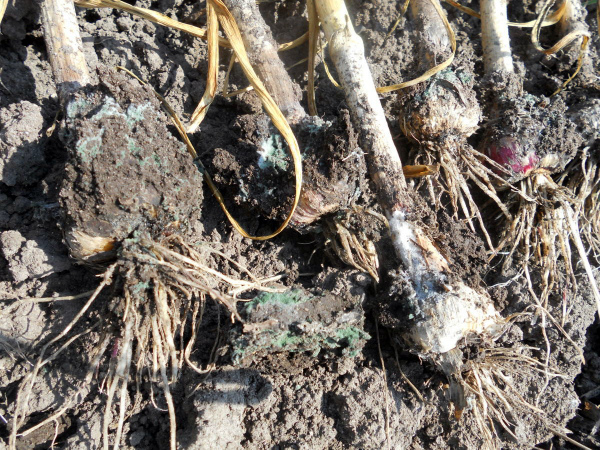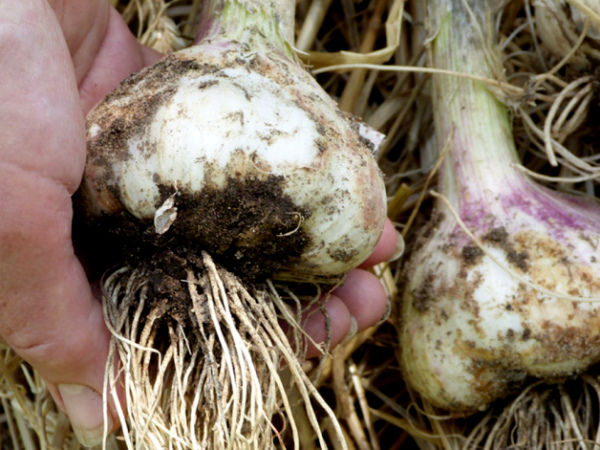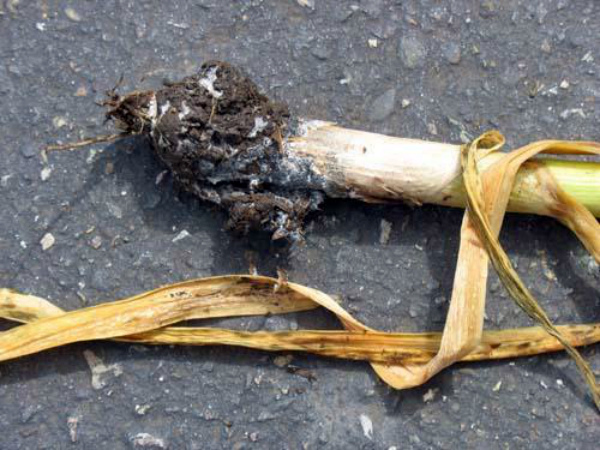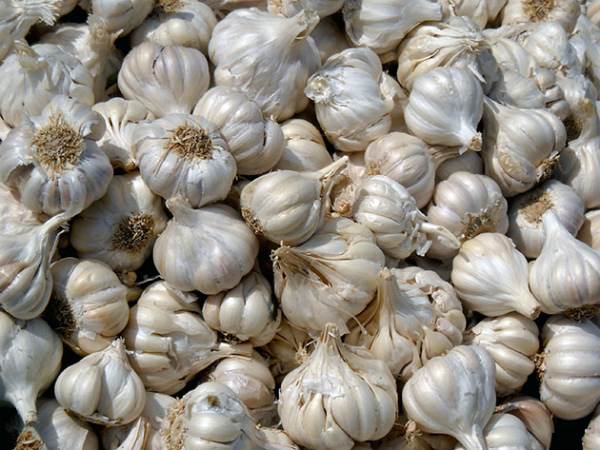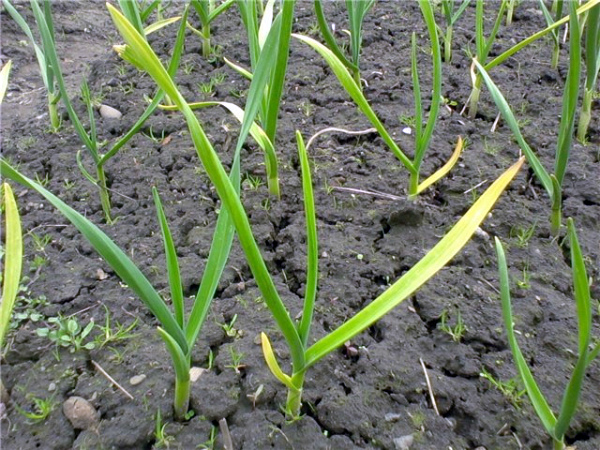Garlic rots in the garden: from what and why?
Content
Possible reasons
If you notice alarming symptoms in plants in the garden, it is important to ask the question: "Why does garlic rot?" The reasons may lie in insufficient care or violation of planting rules. Often this happens due to the fact that you did not follow the crop rotation or sacrificed the disinfection of the site for the sake of quick preparation of the beds.
Fungal diseases are by far the most common causes of crop spoilage. Fusarium wilting of garlic, for example, develops at high humidity, when moisture stagnates in the soil. If this occurs during a sultry period, then the plant has very little chance of surviving the onslaught of the fungus. The disease develops from the root system of garlic, gradually rising up, so it is very difficult to notice it in the early stages. The first obvious symptom is early yellowing of the leaves.
The longer the disease remains without treatment, the more fatal the consequences: the teeth become soft, rot forms in them, the root system dies off under the influence of the fungus, and then the whole plant withers. The spread of fusarium occurs through the soil and water, therefore, all the plants in the garden become infected quite quickly.
Another reason why garlic rots is the white rot of the bottom. The disease develops actively with abundant watering, when the soil moisture is too high, however, unlike fusarium, a low air temperature is required for its spread. Winter garlic is at risk in the spring, when the snow begins to melt. The leaves and stalks of garlic turn yellow profusely, soon dry out and fall off. In the root part of the plant, a white mycelium forms, that is, the mycelium, which infects the soil with spores. The roots die off over time, and the cloves in the bulb rot.
If penicillosis (green mold of garlic) appears in the garden, then this can also be the cause of rotting. Brown watery spots form on the bottom and outer husk. Individual cloves in the bulb are affected, gradually fading and becoming covered with small depressed spots of a dark yellow color. These spots quickly grow in size, becoming covered with white mold, which turns green after a few days. The cause of development is high humidity coupled with high temperature.
As you can see, the main range of reasons lies in the high humidity of the environment, as well as in the absence of preventive planting care.
The correct choice of seed
Often, diseases and other reasons why garlic rots appear for a reason. I would like to believe that this is just bad luck or that there are circumstances, but the fact is that the conditions of collection or storage were violated.
It is extremely important to do the selection of the seed. It is unacceptable to use rotten, moldy or wormhole cloves. They become the source of fungal spores, which subsequently infect the soil and all neighboring plants.
If you carry out preventive treatment of seed with fungicidal preparations, then the probability of bringing the disease to the garden bed is significantly reduced. You can use "Fitosporin", "Topsin-M", with a solution of which the cloves are sprayed before sowing or soaked the day before.
It is impossible to take cloves for planting, if they are taken from a diseased plant.
The seed must be processed before planting. You can rinse the cloves in a saline solution by dissolving 3 tablespoons of table salt in 5 liters of water, and then dipping the cloves into it for 1-2 minutes. It is recommended to do soaking for a day in a pink solution of potassium permanganate or a solution of copper sulfate. You can also use ash lye for disinfection by boiling 400 grams of ash in 2 liters of water, cooling the solution and soaking the cloves in it for 2 hours.
Alternatively, you can lower the chances of rotting by simply choosing a fungal-resistant strain. These include:
- Yubileiny Gribovsky is a variety of medium ripening duration, produces an arrow. Vegetation lasts from 80 to 125 days, the bulbs grow small, up to 50 grams in weight.
- Zubrenok - a variety of medium ripening duration, releases an arrow. A large onion weighs up to 75 grams, cloves 5-6 pieces.
- Novosibirsk - a variety of medium ripening duration, does not release an arrow. Vegetation takes up to 80 days.
The subtleties of choosing a landing site
Do not forget that the place where it is planted affects the quality and healthy development of garlic. What in no case should you do is plant this crop twice in a row in the same place. It is this reason that ranks second in the list of answers to the question "why did the garlic start to rot".
In rare cases, it is possible to grow air bulbs, and then one-toothed in one place, but it is imperative to carry out preventive treatment of the beds with fungicides and closely monitor the condition of the plants. You should not plant garlic next to potatoes, since this culture stimulates the development of fusarium wilting in all plants surrounding it.
To disinfect the beds, you can use a solution of copper sulfate, a strong solution of potassium permanganate, special preparations, for example, "HOM".
In addition, the landing site should not be in the lowlands, where water is retained. Remember that high humidity creates an ideal environment for fungal spores to grow. The site can be additionally fertilized with a mixture of nitrate (200 grams), potassium chloride (200 grams) and superphosphate (600 grams) per 10 square meters. It is imperative to maintain a distance between the planted teeth of at least 10 centimeters, the depth should not be less than 4 centimeters.
Video "The problem of rotting garlic"
If you notice that the garlic is rotting, it may be infected with Fusarium. This video will tell you about the signs of damage to your garlic with fusarium and methods of dealing with it.

